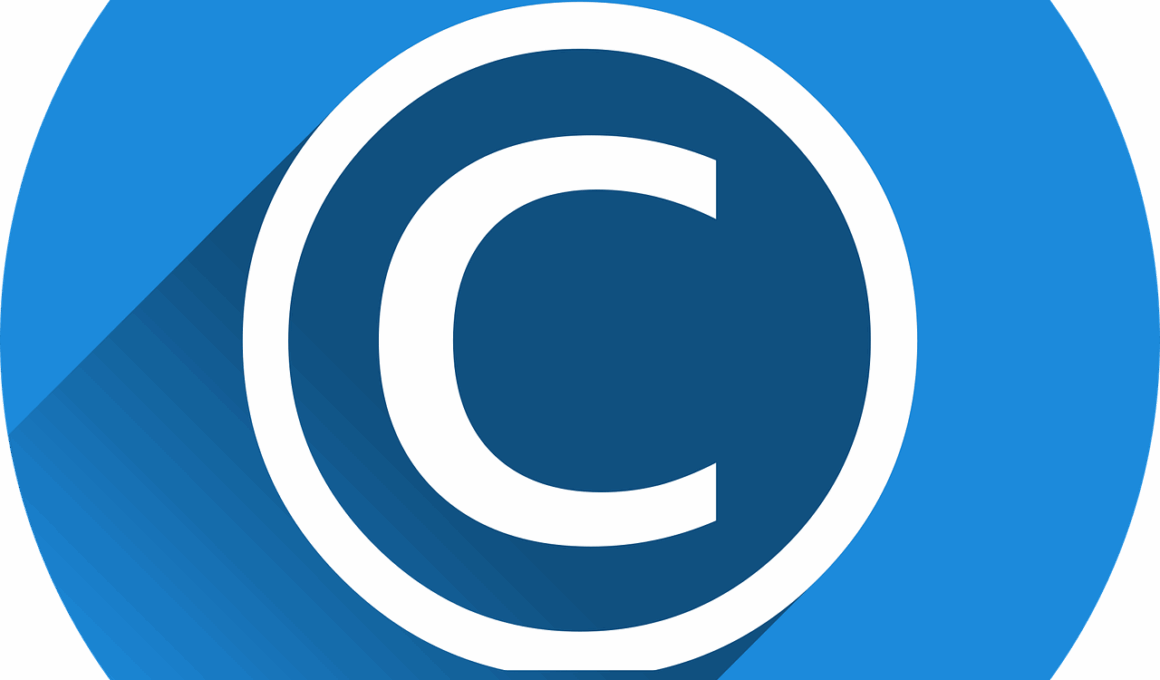How TikTok Creators Handle Copyright and Music Rights
In the vibrant world of TikTok, creators often weave together engaging content that reflects their personalities and connects with their audiences. However, navigating copyright and music rights can be challenging and complicated. Many creators must be aware that the music used in their videos often comes with licenses that are not always clear. When users upload videos that include music that they do not own the rights to, they risk having their content taken down or even facing fines. TikTok has made strides to support creators through various partnerships with music rights holders, but understanding the legal nuances remains critical for every creator. It’s vital for creators to familiarize themselves with terms of use on TikTok and any applicable copyright laws in their jurisdictions. Additionally, they can explore platforms that offer music licensing specifically designed for creators to ensure their content remains compliant. Understanding these dynamics can be the difference between viral success and potential legal ramifications, so it is essential for all TikTok creators to invest time in learning how to protect their work while showcasing their creativity. Keeping up with trends in rights management can benefit one’s overall presence.
The Importance of Licensing
Licensing is crucial for any creator who wants to use popular music tracks in their videos. TikTok provides a library of licensed songs, but often, creators wish to use more mainstream or trending audio. By understanding music licensing, creators can identify tracks that they can legally use without infringing on the rights of the original owners. A failure to license correctly can lead to copyright claims against their videos. This claim can cause warnings or strikes on their accounts, impacting their ability to create and share new content. Therefore, it is important for TikTok users to look for music that comes from verified sources or to use TikTok’s approved audio clips. Additionally, many artists and labels have begun to make their music available for creators who want to promote their songs on platforms like TikTok. Engaging with artists through collaboration or promotional programs can also enhance creators’ awareness of music rights while mutually benefiting both parties. Understanding the licensing landscape helps creators keep their accounts in good standing and align their creative vision with legal protections.
Beyond licensing, understanding the difference between fair use and copyright infringement is essential for TikTok creators. Fair use allows individuals to use copyrighted materials under specific circumstances without needing permission, but the rules can be intricate. It generally applies to short snippets of music used for commentary, criticism, or parody. However, TikTok videos are unique in that they often feature music as a core component of their appeal. Thus, creators must carefully consider whether their usage of music may qualify as fair use, ensuring they respect artist rights. Exploring legal precedents and existing interpretations around fair use can equip creators with the knowledge needed to navigate this complex space. They should pay close attention to how their content aligns with fair use doctrines and stay mindful of each video’s context and purpose. For creators seeking to adopt fair use practices, considering talking to legal experts can provide valuable insights that improve the understanding of their responsibilities. In the long run, being informed about these legal nuances can enhance a creator’s reputation and help foster a supportive artistic community.
Engaging with Music Rights Organizations
Another avenue for TikTok creators to navigate music rights effectively is by engaging with music rights organizations. These organizations play a key role in protecting artists’ rights and managing the licensing of music. By joining or consulting with these organizations, creators can gain insights into the latest trends and best practices for using music in their content. Organizations such as BMI or ASCAP offer resources that inform creators about copyright laws and provide a range of tools designed to facilitate the licensing process. Networking with these organizations can also enhance a creator’s understanding of the music industry, creating potential collaboration opportunities. It’s important for creators to actively seek out partnerships with rights holders or representatives who can guide them through legal complexities. In addition, online workshops and webinars hosted by these organizations can offer educational materials aimed at demystifying music rights. This knowledge not only empowers creators to use music correctly but also cultivates a culture of mutual respect between creators and artists that is essential for the growth of the TikTok community.
In addition to legal knowledge, creators should adopt best practices when sharing music on TikTok. These best practices include giving proper credit to artists and refraining from using copyrighted music excessively in a single video. By showcasing respect for the creators of music, TikTok users further solidify their standing in the community. They can gain followers who appreciate their dedication to the arts and support their content creation endeavors. Moreover, creators can openly communicate with their audience about music selections through captions or live interactions, fostering a deeper connection. Transparency regarding music use also encourages viewers to think critically about music consumption in the digital age. It’s a form of advocacy that attracts positive attention and may result in conversations about copyright that are essential for developing awareness. Creators who exhibit ethical practices when using music will find that their audiences respond positively. The journey of a TikTok creator does not solely revolve around dancing trends or challenges; it requires a thoughtful approach to every piece of content shared.
Innovative Ways Creators Use Music
Creativity knows no bounds on TikTok, and that extends to how creators incorporate music into their videos. Innovative content stands out, and creators consistently seek new methods to enchant audiences. From mash-ups to remixes, many creators experiment with sound to craft unique audio experiences that distinguish their videos. Understanding copyright can fuel this creativity, leading to inventive solutions that captivate viewers while respecting music rights. Engaging in dialogues with fellow creators often sparks inspiration, leading to collaborations that blend different styles and musical influences. Additionally, trending sounds and challenges present opportunities to join movements while spotlighting artists behind the music. Collaborating with artists directly can also open doors for original music creation, allowing creators to shine as both performers and promoters. Regularly participating in these dynamics can significantly amplify a creator’s visibility and engagement on TikTok. Ultimately, creators who evolve their music use into an art form not only enrich their content but also contribute to a culture where originality and collaboration flourish. Embracing innovative approaches continues to push the boundaries of what’s possible on the TikTok platform.
A supportive community is critical for TikTok creators as they navigate music rights and copyright challenges. Establishing connections with fellow creators provides opportunities for shared experiences and practical advice. Engaging in discussions about copyright can create a foundation for mutual learning and protection. For instance, creators can share their strategies for successful video music usage, discuss favorite licensed tracks, and learn from each other’s missteps. When creators actively participate in this community, they build a network that promotes collaboration and growth. Local meet-ups or online forums can also facilitate discussions surrounding music rights, forging supportive relationships that enhance knowledge for all parties involved. Furthermore, leveraging social media platforms can expand this network beyond TikTok, allowing for greater discourse around copyright in the digital space. Being part of a community reinforces a sense of belonging while ensuring that creators stay informed about best practices. A united front among creators helps cultivate an environment where creativity thrives while protecting the rights of those within the industry. Learning and sharing harmoniously together, TikTok creators can pave the way for an inspiring and innovative future.
As a finish to understanding copyright in music, creators should be continuously vigilant about changes in laws and policies. Copyright laws can vary greatly by region, and there can be shifts that may affect how music can be used on platforms like TikTok. Regularly checking official updates from organizations and music rights groups ensures that creators stay compliant. Moreover, social platforms like TikTok are continually evolving as they add new features and change their policies to accommodate music use. This dynamic landscape requires creators to be proactive and responsive to these changes to avoid complications relating to their content. Educational resources provided by TikTok itself can help creators better understand their rights and responsibilities. Keeping abreast of developments in this domain allows creators to navigate unforeseen circumstances effectively. In conclusion, not only is it crucial to appreciate the legal nuances of music rights on TikTok, but it is also essential to foster a community that thrives on collaboration and ethical principles. This creates an environment where creativity and respect can flourish, leading to a mutually beneficial relationship that enriches the TikTok community as a whole.


